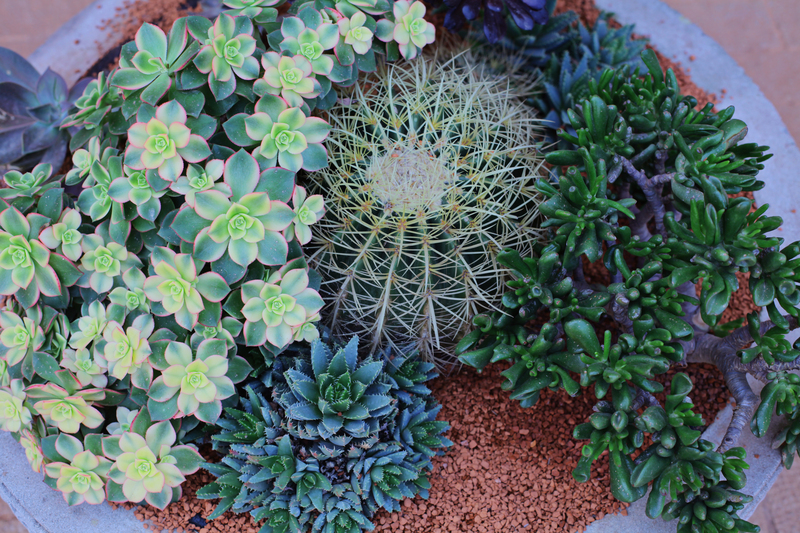Seeds of Change: Harnessing Gardening for Climate Battle
Posted on 06/06/2025
Seeds of Change: Harnessing Gardening for the Climate Battle
The threat of climate change looms larger each year, but hope often grows in unexpected places--sometimes right beneath our feet. Gardening for the climate battle may sound simple, yet the impact can be profound. From absorbing carbon dioxide to restoring local biodiversity, the humble act of planting seeds becomes a statement for the earth's future.
In this comprehensive article, we'll explore why and how harnessing gardening for climate action creates real, measurable change. Dive in as we unearth the strategies, science, and seeds of hope that can help combat climate change from your backyard.
Understanding the Climate Crisis: Why We Need Seeds of Change
The escalation of global temperatures, frequent droughts, floods, and the alarming loss of biodiversity remind us that the climate crisis can't be ignored. Human-related greenhouse gas emissions have pushed the environment to a turning point. But change can begin with simple actions--and gardening for the climate battle is one such action accessible to many.
Climate Change: What's at Stake?
- Rising temperatures threaten food and water security.
- Loss of biodiversity disrupts delicate ecological balances.
- Shifting weather patterns impact livelihoods and natural habitats.
- Soil degradation undermines future agricultural productivity.
In this context, gardens transform from private sanctuaries to mini-habitats championing resilience and sustainability.

Eco-Friendly Gardening: Sowing Seeds for Sustainability
Climate-smart gardening involves more than just nurturing plants--it's about making thoughtful choices that benefit the environment. So, how can we make our gardens a frontline defense in the fight against global warming?
How Gardening Helps Mitigate Climate Change
A garden grown with intention is a potent climate tool. Here's how:
- Carbon Sequestration: Plants--especially trees and deep-rooted perennials--absorb and store atmospheric carbon dioxide, reducing greenhouse gases.
- Urban Cooling: Gardens provide shade, retain moisture, and release water vapor, all of which help cool the urban heat island effect.
- Biodiversity: Diverse gardens attract pollinators and beneficial wildlife, helping restore threatened populations.
- Soil Health: Composting garden waste enriches the soil, increasing its carbon-holding capacity and reducing landfill waste.
- Water Conservation: Smart plant choices and soil management reduce the need for excessive watering, easing pressure on local resources.
Seeds of Change: Key Variations of Climate-Resilient Gardening
To make the most of gardening for the climate battle, consider these ecological gardening approaches:
- Permaculture: Mimics natural ecosystems to create self-sustaining, low-impact gardens.
- Regenerative Gardening: Focuses on restoring soil health and sequestering more carbon than is emitted.
- Native Plant Gardens: Use indigenous species that support local biodiversity and require less water/fertilizer.
- Edible Landscapes: Grow food while supporting pollinators and reducing "food miles".
- Wildlife Gardens: Prioritize habitats for bees, butterflies, birds, and other vital species.
How to Start a Climate-Smart Garden
Anyone can contribute to the climate solution with a little knowledge and effort. Here's a step-by-step guide for establishing a garden that makes a difference.
Step 1: Assess and Plan
Begin by understanding your site's unique conditions: soil quality, sunlight patterns, rainfall, local climate, and existing vegetation. Ask yourself:
- Which areas are best for planting trees, shrubs, or crops?
- What native species naturally thrive here?
- Where can you introduce water-saving techniques?
Step 2: Choose Climate-Resilient Plants
- Native Plants: Indigenous species often need less water and fertilizer and are resistant to local pests.
- Drought-Tolerant Varieties: Reduce water use by growing deep-rooted, low-maintenance flora.
- Perennials and Trees: Store more carbon and provide lasting benefits compared to annuals.
Step 3: Improve Soil and Compost
Healthy soil is the foundation of climate-resilient gardening. Practice no-dig gardening to preserve soil carbon, and compost all green waste to create rich, living soils that sequester carbon.
Step 4: Manage Water Efficiently
- Mulching: Retains moisture, reduces evaporation, and adds organic matter to soil.
- Rainwater Harvesting: Collect roof runoff in barrels to irrigate during dry spells.
- Drip Irrigation: Minimizes waste and delivers water directly to plant roots.
Step 5: Foster Biodiversity and Protect Pollinators
- Plant a variety of flowers so something is always blooming.
- Avoid pesticides and herbicides--go organic.
- Include shelter, such as log piles or bug hotels, for beneficial insects.
- Leave some areas "untidy" as habitat for wildlife.
The Benefits of Climate-Smart Gardening
Gardeners fighting the climate battle aren't just helping the planet. They're also reaping social, ecological, and psychological benefits.
Environmental Benefits
- Lower Carbon Footprint: Local food production reduces emissions from transport.
- Less Waste: Composting and recycling organic matter reduce landfill burden.
- Balanced Ecosystems: Enhances pollinator and wildlife presence, creating more resilient habitats.
Community and Personal Benefits
- Education: Collaborative gardening teaches all ages about sustainability and environmental stewardship.
- Mental Health: Time in the garden lowers stress and provides a sense of accomplishment.
- Community Resilience: Shared gardens foster connection and local food security.
Economic Benefits
- Reduced Food Costs: Growing your own vegetables can save money and boost nutrition.
- Employment Opportunities: Climate-focused horticulture creates new green jobs.
Innovating for the Future: Technology and the Seeds of Change
The climate gardening movement is evolving, embracing both traditional wisdom and cutting-edge technology. Here's how innovators are supercharging gardening for the climate battle:
Smart Gardening Tools
- Soil Sensors: Monitor moisture, pH, and nutrient levels for efficient management.
- Automated Irrigation: Delivers water only when and where needed.
- Climate Forecasting Apps: Help gardeners plan for heat waves, droughts, or frosts.
Citizen Science and Community Action
- Wildlife Monitoring: Map pollinator populations to help track biodiversity and improve strategies.
- Seed Swaps: Preserve endangered plant varieties and adapt local gardens to changing climates.

Overcoming Challenges in Climate Gardening
While the seeds of change hold immense promise, challenges persist:
- Urban Space Limitations: Innovative solutions like rooftop, container, and vertical gardens are expanding possibilities.
- Knowledge Gaps: Community workshops and online resources make learning accessible.
- Pests and Diseases: Emphasize natural pest management to build resilient gardens.
- Changing Weather Patterns: Plant diverse species and use adaptive management for unpredictable conditions.
Case Studies: Local Seeds, Global Impact
Around the globe, communities are embracing climate-resilient gardening. From Kenya's "Green Belt Movement," which has planted millions of trees to combat deforestation, to urban gardeners in New York converting vacant lots into mini-forests, the cumulative effect is transforming landscapes and attitudes alike.
Conclusion: Every Garden Matters in the Climate Battle
Seeds of change are more than metaphors--they're the real beginnings of a new era of sustainability. Each garden, no matter how small, can become a force for climate action. Whether you create a pollinator paradise, plant drought-resistant vegetables, or start composting, your efforts ripple far beyond your fence.
Harnessing gardening for the climate battle is a powerful act of hope and agency at a time when our planet needs both. Let your garden become a declaration: the climate revolution is rooted in our own backyards.
Action Steps: Your Role in the Seeds of Change Movement
- Start small--plant a pollinator patch, window box, or tree today.
- Share knowledge--teach friends, neighbors, and children about climate-smart gardening.
- Support native plant nurseries--buy local, organic, and native species whenever possible.
- Get involved--join or start a community garden focused on sustainability.
- Track your progress--measure your garden's harvests and environmental benefits.
The battles of climate change are daunting, but every green space--and every gardener--counts. Nurture the seeds of change. Your garden can help save the world.



